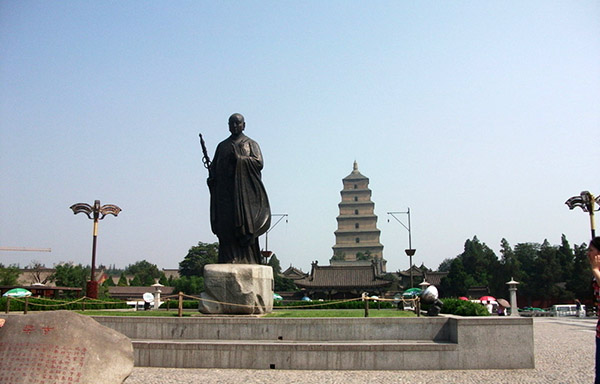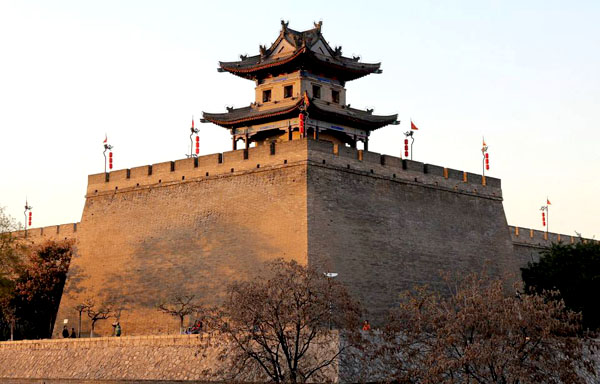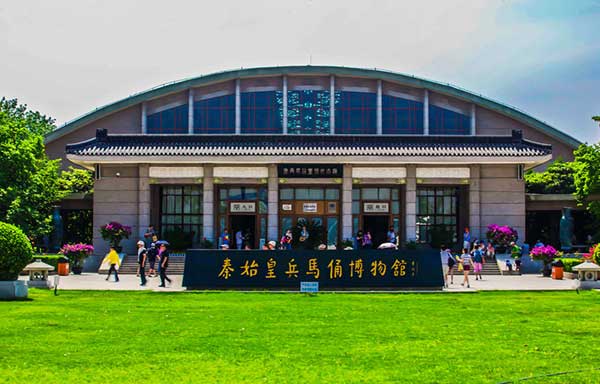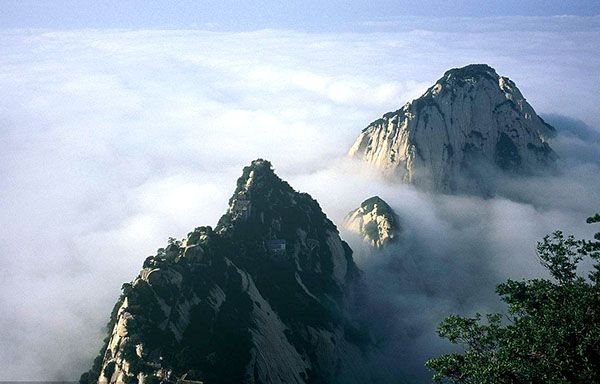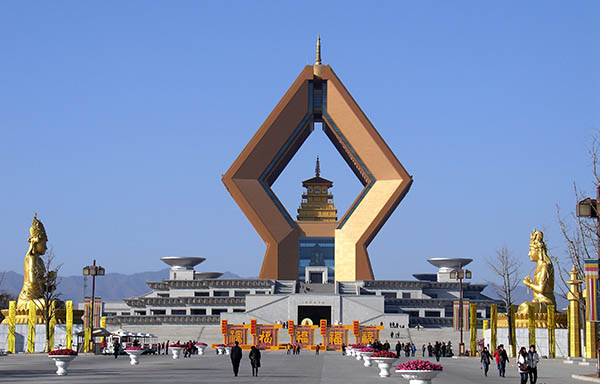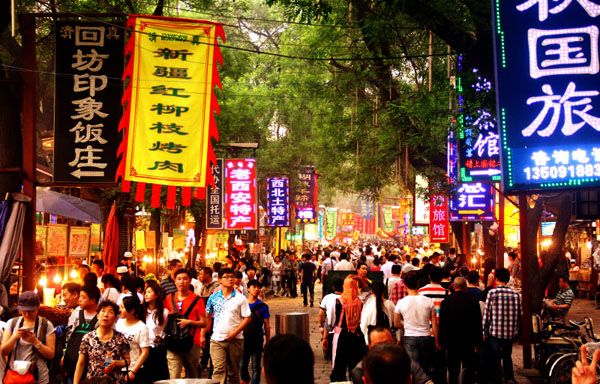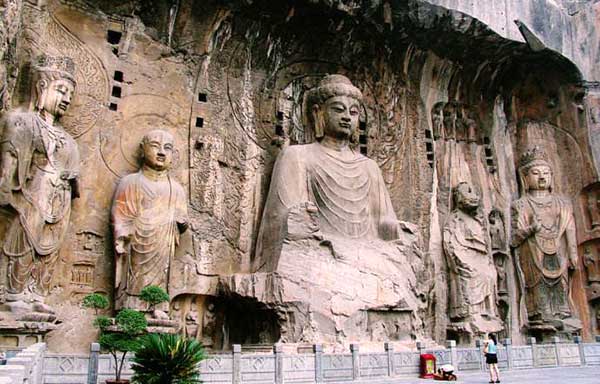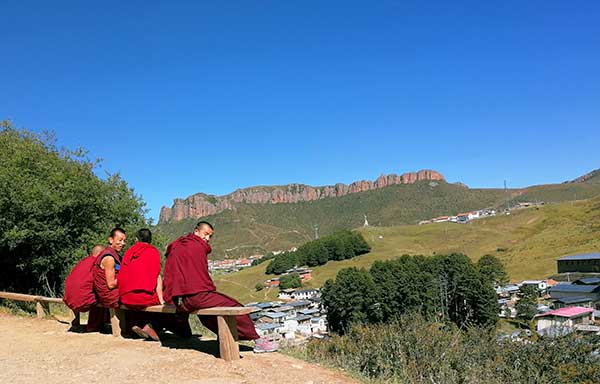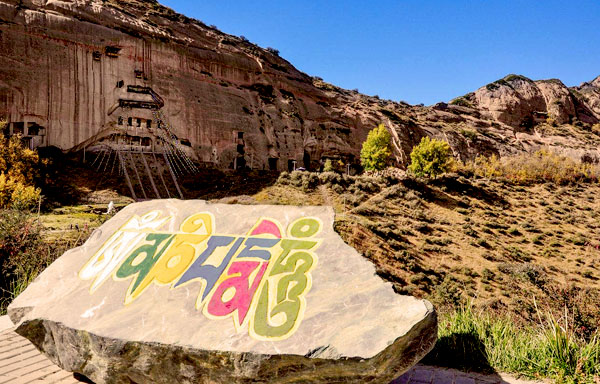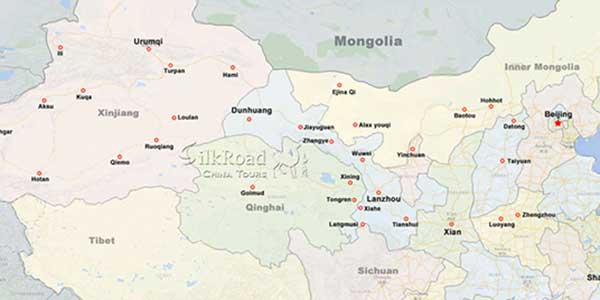 Famen Temple is located in Famen Town, Fufeng County, about 110 kilometers west of Xian City and 90 kilometers east of Baoji City. Initially established at the end of the Eastern Han Dynasty, Famen Temple was given its name in the Tang Dynasty. With more than 1,700 years history, it is taken as the grandfather of temples and pagodas in Central China.
Famen Temple is located in Famen Town, Fufeng County, about 110 kilometers west of Xian City and 90 kilometers east of Baoji City. Initially established at the end of the Eastern Han Dynasty, Famen Temple was given its name in the Tang Dynasty. With more than 1,700 years history, it is taken as the grandfather of temples and pagodas in Central China.
Famen Temple was established for the purpose of the Stupa, while the Stupa was established for the Buddhist relics of Sakyamuni, the founder of Buddhism. During the 200 years of the Tang Dynasty, eight emperors attended the welcoming and seeing-off activities of the Buddhist relics. Tang Emperor Xizong buried thousands of rare treasures together with the Buddhist relics in the underground palace. Thereafter, Famen Temple became an imperial temple and a holy place for Buddhism.
Famen Temple in the Song Dynasty reached its largest scale, and during the period of the Republican China, the temple received its most comprehensive reconstruction.
In 1981, a mysterious underground palace was re-awoken after 1,113 years, when the provincial government decided to rebuild the Stupa. A great number of valuable relics and treasures were unearthed, offering us important data to study the society of the Tang Dynasty.
Famen Temple houses ten unmissable major sites, including the real finger bone of Sakyamuni, the most ancient Stupa underground palace, Tang Dynasty Mandala, 13 hawksbill coins, an imperial tea set, a Buddhist ritual apparatus, including a tin staff, 13 pieces of ST color porcelain, more than 700 pieces of silk article and Buddhist relic boxes.
Why is the Famen Temple special?
Famen Temple was established in the Eastern Han Dynasty (25--220) with the purpose to carry forward Buddhism. There are the most famous Buddhist temple and the biggest Buddhist pagoda in the world inside this scenic spot. The temple is renowned for storing the veritable finger bone relic of the Sakyamuni Buddha as well.
Famen Temple Highlights
The most representative structures in the Famen Temple Scenic Spot are: Dagoba, Famen Temple Pagoda and Famen Temple Museum.
The Dagoba
The Dagoba have both carried forward the Buddhist culture and combined the essence of architecture of both China and the foreign countries: the glass curtain is the product of modern technique; while the Mani-gem and Lotus Terrace represent the style and spirit of traditional Buddhist building.
The zen gesture of the Dagoba is meaningful, which can not only present the Buddhist culture, but also symbolize the peace and harmony of the world. The finger bone relic of Sakyamuni and thousands of precious treasures which were offered to Buddhist in ancient time were preserved well.
The Famen Temple Pagoda
An Underground Palace was discovered unexpectedly in 1987 during the reconstruction and it has become the biggest Buddhist underground palace so far discovered.
Famen Temple Museum
It is a typical Buddhist Art Museum which focuses on the collection, protection, display and study of the precious treasure excavated from the Underground Palace of the Famen Temple, including gold and silverware, colored glaze ware, porcelain and silks.
Gallery
Attractions in the area
Related Tours
General Information
Alias: No
Loc: 110 km from Xian
Entrance: 120 RMB
Open Time: 08:00~17:30
Relevant blogs
-
How did the name of Tianshui in Gansu come about?
The name Tianshui is very pleasant to the ear, and it reminds one of that exquisitely beautiful verse, "After getting drunk, one doesn't know if the sky is in
-
The 8th Silk Road Hotel Festival was successfully held i
On December 27th, the "8th Silk Road Hotel Festival" grandly opened at the Yujing International Hotel in Zhangye. This hotel festival gathered industry experts,
-
The Karez Irrigation System in Turpan has been selected
On September 3rd, at the 75th Executive Council Meeting of the International Commission on Irrigation and Drainage held in Sydney, Australia, the 2024 (11th bat
-
What is the connection between "dragons" and "snakes
In traditional Chinese culture, the snake has a dual identity of auspiciousness and danger. Ancient people believed that the snake not only possesses divine cha
-
Endangered Przewalski's Horses Spotted at Dunhuang Yume
<p>In early February, a group of special "visitors"—the Przewalski's horses—appeared at the Dunhuang Yumen Pass scenic area in Gansu Province, a U
-
The Fourth Dunhuang Cultural Tourism Supplier Conference
On the morning of February 18th, the Fourth Dunhuang Cultural Tourism Supplier Conference in Northwest China commenced at the Dunhuang International Convention






